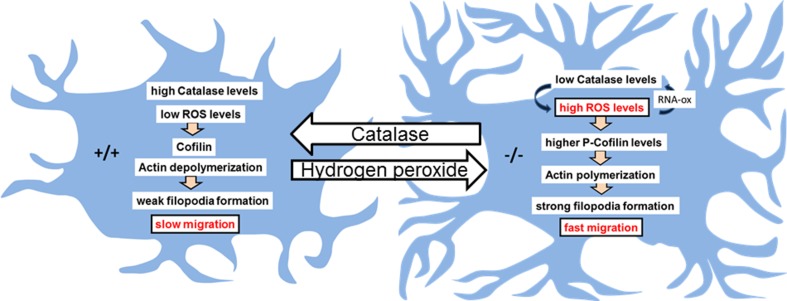Fig. 7.
Model for the effect of Bmal1 deficiency on neural progenitor cell (NPC) migration. In NPCs of Bmal1-deficient mice (−/−) impaired detoxification of reactive oxygen species (ROS) results in enhanced RNA oxidation (RNAox). Oxidation of catalase mRNA leads to decreased catalase protein levels and thus further enhancing ROS accumulation. This is associated with a higher level of the ROS-sensitive mediator of actin polymerization p-Cofilin and with stronger filopodia formation and higher migration velocity. Exogenous application of catalase in NPCs from Bmal1−/− mice leads to a reduction of ROS levels and to a wild-type (+/+) filopodia and migration phenotype. Vice versa, exogenous application of hydrogen peroxide in NPCs from Bmal1+/+ mice leads to a Bmal1−/− (−/−) filopodia and migration phenotype

